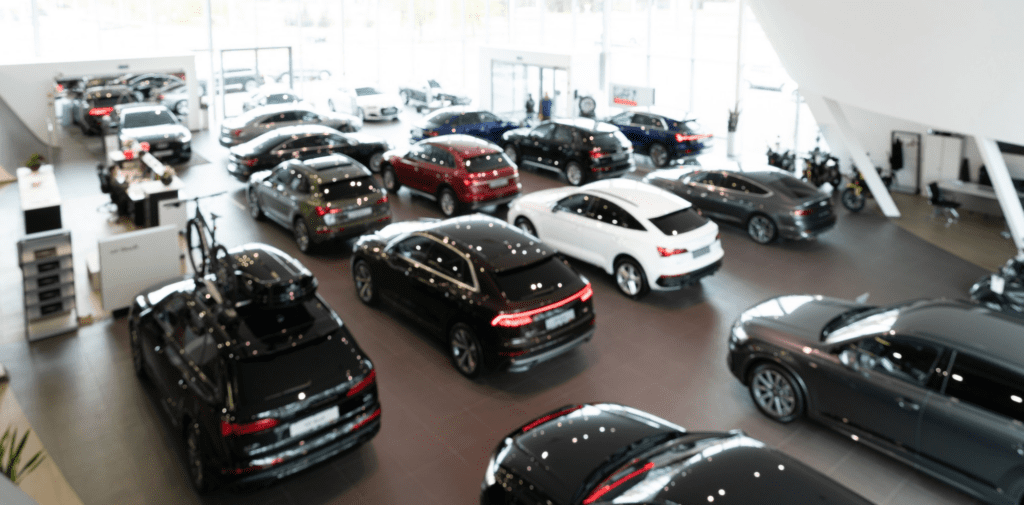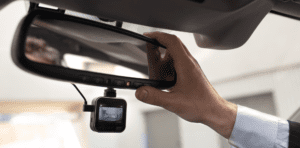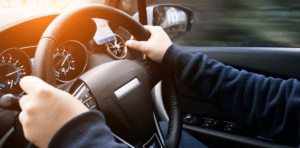Compare cheap car insurance
✔ Compare cheap car insurance quotes
✔ Over 110 insurance providers
✔ Get a quote in minutes
✔ Save up to £504*
Although the image of the ‘dodgy used car dealer’ is now largely a thing of the past, it’s still important to exercise caution when buying a second-hand car.
- Buying a Second-Hand Car
- What to Check When Buying a Used Car
- What Documents and Details Should I Check Before Buying a Second-Hand Car?
- Test Drive Checklist for Buying a Used Car
- If You Decide to Buy a Used Car
- Frequently asked questions
Our checklist provides detailed guidance on what to consider when buying a used car, helping you to make a well-informed decision.
Buying a Second-Hand Car
The process of buying a second-hand car can be daunting, but knowing where to look and what to expect can make it easier.
In 2022, nearly seven million Brits purchased used cars, as reported by the Society of Motor Manufacturers and Traders (SMMT). If you’re considering joining them, it’s essential to know the best places to buy.
Dealership
Benefits of Buying from a Dealership
Dealerships, while often pricier than private sellers, offer significant benefits. They frequently provide part-exchange deals and warranties.


An established and reputable dealer ensures the car has been thoroughly checked, reducing the likelihood of immediate problems.
Types of Dealerships
Dealers range from franchised dealerships to independent garages and sole traders. Larger dealerships usually offer used cars that have undergone rigorous inspections and come with solid warranties, albeit at a higher price.
Choosing the Right Dealership
- Look for customer reviews to assess their reputation.
- Check for accreditation from trade associations like the Motor Ombudsman, Retail Motor Industry Federation, or Scotland Motor Trade Association. Accredited dealerships can often be found on the association’s website.
- Prefer dealerships that have their cars independently checked by motoring organisations or engineers.
Private Seller
Advantages and Risks
Buying from a private seller might be cheaper, but it comes with the responsibility of ensuring the car is in good condition. You might need to hire a mechanic for this, which can be costly.


Protecting Your Purchase
- Get a detailed written description of the car from the seller, including copies of the advert and email confirmations of any phone discussions.
- Visit the seller’s home for a viewing. Meeting in a public place can be a red flag.
- Never go alone. Take someone knowledgeable about cars with you.
Auction
The Auction Experience
Auctions can offer significant savings but are riskier. There’s less protection, like warranties, and decisions need to be made quickly, which can lead to rushed choices without thorough inspections or test drives.


Tips for Auction Buyers
- Conduct thorough pre-auction research on prices and previous auction sales.
- Arrive early at the auction to inspect cars.
- Observe the car carefully as it moves through the auction hall, paying attention to the engine and overall performance.
- Set a budget and adhere to it, considering any additional auction house fees.
Important Information
Remember, the rule of ‘transferring remaining car tax’ to the new owner no longer applies. When buying a used car in the UK, you must tax it yourself before driving. The seller will receive a refund for any remaining tax post-sale.
How much can you save on your car insurance?
What to Check When Buying a Used Car
Purchasing a second-hand car requires careful inspection to ensure you’re making a wise investment. It’s best to arrange viewings during daylight and in dry weather, as this makes it easier to spot any potential issues.
Exterior Inspection
Paintwork
- Check for inconsistent paintwork: Look for variations in colour or gaps between panels, which might indicate repairs after an accident.
- Rust: Even minor rust can lead to significant repairs. Bubbled paint is a clear indication of rust damage.
- Consistency: Open the bonnet, doors, and boot to see if the inside metal matches the exterior colour. Differences could suggest repainting after damage.
- Minor Blemishes: Don’t worry too much about small scratches or dents; these are normal for used cars and can be fixed or used for price negotiation.
Doors, Windows, and Boot
- Ensure they open and close smoothly without any hindrance.
Suspension
- Test the suspension by pushing down on each corner of the car; it should rebound smoothly. Excessive bouncing indicates potential suspension issues.
Tyres
- Look for good tread depth; anything below 3mm will likely need replacing soon, and below 1.6mm is illegal in the UK.
- Check for a spare wheel or puncture repair kit, and ensure the necessary tools for tyre changing, including the wheel nut key, are present.
Under the Bonnet
- Fluid Levels: Check oil, brake, and power steering fluid levels.
- Leaks and Oil Quality: Ensure there’s no leaking oil and that the oil appears clean, indicating regular maintenance.
- Coolant: It should resemble anti-freeze, not rusty in colour.
Interior Inspection
- Controls: Verify that the horn, windscreen washers, wipers, lights, indicators, heating, air conditioning, and entertainment systems are all functioning.
- Windscreen: Look for any chips, cracks, or damage.
- Seat Belts: They should fasten securely without damage or fraying.
- Airbag System: Check the airbag warning lights according to the car’s manual.
- Adjustments: Ensure seats, headrests, and any folding seats work correctly.
- Upholstery: Check for stains, tears, or odours that may be hard to eliminate.
Practical Considerations
- Space: Consider your needs, such as boot space for a pushchair or ease of fitting a child seat.
- For Electric Cars: If considering an electric vehicle, inquire about battery leasing and compatibility with rapid chargers.
Used Vehicle Inspection
Professional Inspection
- If unsure, consider a professional inspection. Both the RAC and the AA offer used vehicle inspections, which can be basic or comprehensive. This service checks the car’s mechanical and structural integrity.
- Taking a knowledgeable friend or mechanic with you can also be incredibly valuable.
Additional Tips
- Documentation: Always check the car’s documentation, including service history and MOT certificates, to ensure it has been well-maintained.
- Test Drive: A test drive is crucial to assess the car’s performance and comfort.
- Background Check: Conduct a history check to ensure there are no outstanding finances, it hasn’t been stolen, or previously involved in a major incident.
By following these detailed checks, you can make an informed decision and avoid potential issues with your second-hand car purchase.
How much can you save on your car insurance?
What Documents and Details Should I Check Before Buying a Second-Hand Car?
When considering the purchase of a second-hand car, it’s crucial to verify a variety of documents and details to ensure the vehicle’s legitimacy and condition.


Essential Documents
V5C Registration Document
- Registered Owner: Confirm the seller is the registered owner as listed on the V5C.
- Authenticity Checks: Look for spelling errors, ensure the document has a watermark, and verify the car’s number plate and Vehicle Identification Number (VIN) match those on the V5C.
- Ownership History: The V5C shows the duration of the current owner’s possession and the total number of previous owners. Frequent changes in ownership might indicate issues with the car.
Car’s History
- Use the DVLA’s Vehicle Information Checker with the car’s registration number to confirm details match those in the V5C logbook.
MOT History
- MOT Records: Check the car’s MOT history using the Government’s MOT checker. This includes the date for the next MOT.
- SORN Status: The car should only be without an MOT if it was declared off-road with a SORN (Statutory Off Road Notification).
Service History
- Review the service history to assess how well the car has been maintained.
Additional Checks
Private History Check
- Comprehensive Background: Consider using services that offer history checks for a fee. These checks can reveal if the car:
- Has been reported stolen.
- Was involved in a serious accident.
- Has been written off.
- Has an accurate or clocked mileage.
- Carries any outstanding finance.
Extra Tips for a Thorough Check
Direct Enquiries
- Ask Direct Questions: Inquire about any issues or concerns directly with the seller.
Visual Inspection
- Conduct a thorough visual inspection of the car, looking for any signs of damage or repairs.
Test Drive
- Always take a test drive to assess the car’s performance and identify any potential issues.
Mechanic’s Inspection
- Consider getting the car inspected by a professional mechanic. This can provide an unbiased assessment of its condition.
Insurance and Tax Considerations
- Remember to check the insurance status and understand the tax requirements for the vehicle once purchased.
By meticulously checking these documents and details, you can make an informed decision and avoid potential pitfalls when buying a second-hand car.
How much can you save on your car insurance?
Test Drive Checklist for Buying a Used Car
Conducting a test drive is a crucial step in the process of buying a used car. It allows you to assess the car’s condition and determine if it’s the right fit for you. Here’s a comprehensive checklist to guide you through the test drive.
Key Points to Assess
Starting the Engine
- Engine Sound: Listen for any unusual or ‘angry’ noises when starting the engine, as these could indicate costly future repairs.
Temperature Gauge
- Cold and Warm Start: Ensure the car starts smoothly both from cold and warm states.
- Thermostat Function: Check if the thermostat works correctly and look for any signs of overheating.
Clutch and Gears
- Manual Transmission: The clutch shouldn’t be stiff, and gears shouldn’t stick.
- Automatic Transmission: Look for smooth and quiet gear transitions that match the speed and engine load.
Brakes
- Brake Efficiency: Ensure the brakes and handbrake function correctly. Braking should be noise-free, easy, and smooth.
Steering
- Power Steering: Check if the steering is light and responsive.
- Alignment: Notice if the car pulls to one side when you momentarily take your hands off the wheel.
Suspension
- Ride Comfort: The suspension should offer a comfortable ride without feeling overly harsh on bumps.
Performance
- Acceleration: Evaluate how the car performs in traffic. Test the acceleration through different gears to ensure it meets your expectations.
Insurance Considerations
Before the Test Drive
- Insurance Cover: Check that you’re insured to drive the car. If you have personal car insurance, check if it extends to driving other vehicles. Alternatively, confirm if the dealership or private seller’s insurance covers you.
Risks of Uninsured Driving
- Liability and Legal Consequences: Never test drive a car if you’re not insured. You would be responsible for any damage caused and could face legal repercussions, including points on your licence.
Additional Test Drive Tips
Varying Conditions
- Different Roads: Drive on various types of roads to get a feel for the car’s handling in different driving conditions.
Electronics and Features
- Functionality Check: Test all electronic features, including air conditioning, audio system, and navigation, if applicable.
Noise and Vibration
- Interior Noises: Listen for any rattling or vibration within the cabin, which could indicate loose parts or wear.
Visibility and Comfort
- Seating and Visibility: Ensure the driver’s seat is comfortable and offers good visibility.
Overall Feel
- Personal Comfort: Pay attention to how the car ‘feels’ to you. Does it meet your expectations in terms of driving comfort and ease of use?
By following this comprehensive checklist, you can confidently assess a used car’s condition and suitability during a test drive, ensuring a well-informed purchase decision.
How much can you save on your car insurance?
If You Decide to Buy a Used Car
Purchasing a used car can be a great decision if you’re well-informed about what you’re getting. Here’s a guide to ensure a smooth process and avoid unexpected issues.


Making the Decision
Understanding the Car’s Condition
- Realistic Expectations: Remember that used cars may not be perfect. It’s vital to know exactly what you’re paying for and to ensure there are no unpleasant surprises later.
- Negotiation: Don’t hesitate to haggle over the price if you feel the car is worth less than the asking price.
Payment Process
Safe Payment Practices
- Satisfaction First: Only complete the payment when you are completely satisfied with the car.
- Payment Methods: While cash payments can sometimes secure a discount, it’s safer to use traceable methods like credit or debit cards.
- Consumer Protection: Credit card payments may offer additional protection under Section 75 of the Consumer Credit Act for purchases between £100 and £30,000. With debit cards, check if there’s a chargeback scheme for added security.
- Receipt: Always ask for a detailed receipt, including the date, car registration number, mileage, and any agreed-upon work to be done by the seller.
Your Rights and Returns
Consumer Rights Act
- Fit for Purpose: Cars bought from dealers must be fit for purpose under the Consumer Rights Act. It’s illegal to sell a car that’s not roadworthy.
- 30-Day Refund Right: You can get a full refund within the first 30 days for any faults.
- Repair and Replacement: From day 31 to six months, you’re entitled to a repair or replacement. The dealer must prove the fault wasn’t present at the time of delivery.
- After Six Months: You’ll need to prove a fault existed at the time of purchase for repairs or replacements.
Tax and Insurance
Legal Requirements
- Taxing Your Car: Use the green ‘new keeper’s slip’ from the V5C logbook to tax the car. This can be done online, via phone, or at a Post Office.
- Insurance: It’s essential to insure your car before driving. Comparing car insurance quotes from different providers can help you find the right insurance for your needs.
Final Checklist
- Documentation: Ensure all the necessary documents, like service history and MOT certificates, are in order.
- Car’s History: Conduct a full history check for any past incidents or outstanding finance.
- Preparation: Make sure you have all the essentials for your car, such as a spare tyre and necessary tools.
By following these steps and understanding your rights and responsibilities, you can make a confident and informed decision when purchasing a second-hand car.
How much can you save on your car insurance?
Frequently asked questions
If the details on the V5C registration certificate you received from the seller do not align with the DVLA records, it’s important to report this discrepancy to the police immediately.
The age of a second-hand car can vary greatly, ranging from nearly new, just a year old, to classic models manufactured in the previous century.
Typically, the older the car, the less expensive it will be to purchase. However, this depreciation isn’t always straightforward.
New cars often lose their value rapidly, so opting for a car that’s around one to three years old with some mileage can offer significant savings without sacrificing much in terms of modern features and reliability.
Mileage is a crucial consideration when purchasing a second-hand car. Along with the car’s age, mileage significantly influences the vehicle’s value.
A higher mileage often indicates more wear and tear, which can impact the car’s condition. Additionally, specific car components, such as the suspension and timing belt, are designed to last for a certain number of miles.
Therefore, once a car exceeds a specific mileage threshold, the maintenance and repair costs could escalate considerably.










